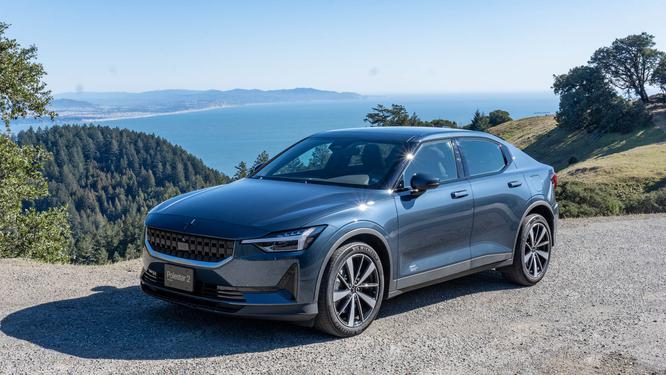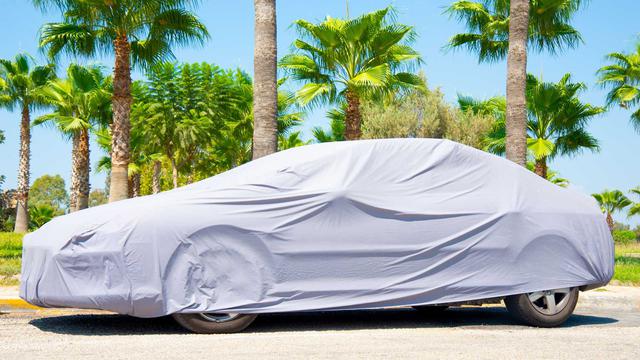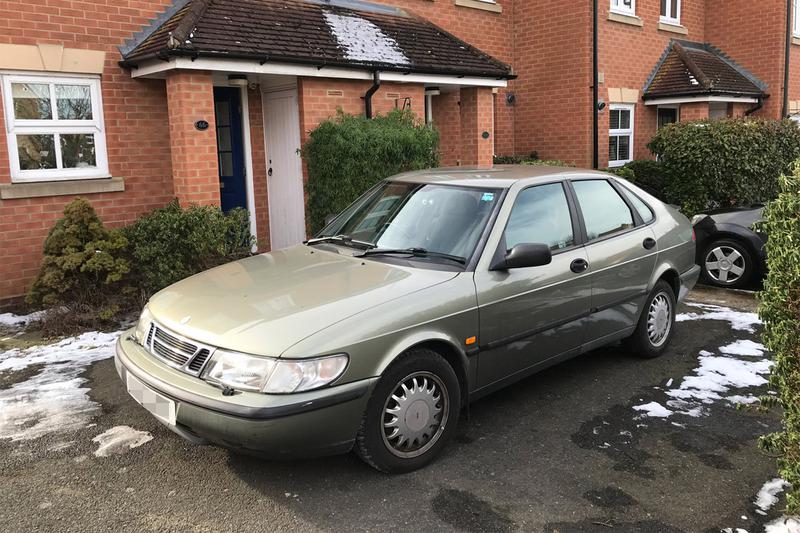Despite the new brand wanting to establish itself in a similar premium market position to its Volvo parent company, the Polestar 2 arrives with blockbuster pricing across its three-variant range.
It's clearly targeting the Tesla Model 3, but surprisingly undercutting many mainstream EV offerings from the Nissan Leaf e+ to the Hyundai Kona electric.
The most basic front-wheel drive version of the Polestar 2, the Single Motor Standard Range, wears an MSRP of just $59,900 and offers a long driving range of 470km (WLTP), offering Australians a relatively affordable entry-point to electrified motoring.
This matches the current pricing of the Model 3 Standard Range (also a 2WD) coming close on range, too (the $59,900 Tesla Model 3 will travel a claimed 491km on the WLTP test cycle).
Next up in the Polestar 2’s range is the Single Motor Long Range, wearing an MSRP of $64,900. It ups the battery capacity significantly, allowing 540km of range between charges.
The Polestar 2 arrives with blockbuster pricing across its three-variant range (image: Tom White).
Its equipment matches the base car, and Polestar’s local division expects this model to take the largest share of sales.
Finally, the top-spec Polestar 2 is the more performance-oriented Dual Motor Long Range.
Wearing an MSRP of $69,900 this all-wheel drive version undercuts the equivalent Model 3 (the Long Range AWD - $73,400) although it doesn’t quite offer the Tesla’s absurd 614km range, delivering 480km on a single charge.
Its second motor almost doubles the power output on offer, making it more than just an all-wheel drive offering.
Standard spec continues many of the similarities with Tesla, as even the base Polestar 2 features a big free-floating 11.15-inch multimedia screen which has a Google-integrated nav suite and always-online features (meaning the car has its own sim card, regardless of whether you’re connected to a phone).

It’s also capable of over-the-air updates, but unlike the Model 3, the Polestar has a real 12.3-inch digital dash suite, in what I would consider a significant win for driver usability.
Even the base Polestar 2 features a big free-floating 11.15-inch multimedia screen (image: Tom White).
Elsewhere, regardless of grade, the Polestar 2 range has 19-inch alloy wheels, dual-zone climate control, LED headlights, keyless entry with no ignition (the car is just ready to go once you put it in drive), vegan textile upholstery with charcoal headlining, a synthetic leather trimmed steering wheel, premium audio system, a powered tailgate, and a rear-view camera.
In a polite move, Polestar throws in a six metre long 11kW Type 2 to Type 2 charging cable as part of the standard gear.
Of course, in typical European style, there are three comprehensive packs which are essentially a way for you to create your own variant.
These include the 'Plus Pack' ($6000) which includes a panoramic sunroof, Harmon Kardon 13-speaker premium audio system, ‘WeaveTech’ vegan upholstery, blacked out bodywork, power front seats with memory function, and a heat pump which more efficiently manages the climate control while providing a heated steering wheel and wiper nozzles.
There is also the pack that we would most recommend, the 'Pilot Pack' ($5000) which includes the rear-facing safety gear notably missing from the standard equipment (more on that later).
It scores you adaptive cruise control, blind spot monitoring with rear cross-traffic alert, rear auto braking, higher-grade LED headlights with cornering function, and a 360-degree parking suite.
The launch car we tested was Performance Pack equipped, adding forged 20-inch alloy wheels (image: Tom White).
Polestar points out that you can equip this pack on the base car and still be under the EV rebate scheme thresholds in NSW or Victoria.
Finally, there is the 'Performance Pack' ($8000) which is only available on the top-spec Dual Motor Long Range variant.
The launch car we tested was Performance Pack equipped, leaning into the performance angle, adding adjustable Ohlins dampers, a Brembo brake package, forged 20-inch alloy wheels, and ‘Swedish Gold’ highlights.
It’s a lot of very neat gear at an appealing price, and I’d be surprised if the Polestar 2 doesn’t take at least a few sales from its main electric rivals.
How is the brand able to do this? Well, it leverages Volvo’s R&D resources in Sweden, while being built in China where it can rely on Geely supply chains.




